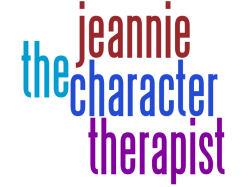|
The
idea for this series came from a talk Nigerian author Chimamanda
Adichie did entitled The Dangers of a Single Story (i.e.,
stereotype)(http://bit.ly/6WfqX).
She told of how she had a single story of the British based on what she
had read in books. She then experienced the flipside of stereotyping
when she came to America for college. Her roommate, having been exposed
to only Western literature, believed Africans to be an uneducated
tribal people, unfamiliar with modern technologies.
The moral of Adichie’s talk was
this: What we write impacts and influences readers. Her main intent was
to warn of the dangers of cultural stereotyping,
but I want to expound on fictional character stereotyping.
An overwhelming 75 percent of
responders on my character stereotype survey indicated they had written
a victim into one of their manuscripts, so that’s the first stereotype
I’ll go over. To see the vast spectrum this stereotype can cover, I’ll
start with Webster’s definition.
Main Entry: vic•tim
Pronunciation: \ˈvik-təm\
Function: noun
1 : one that is
acted on and usually adversely affected by a force or agent: as a (1)
: one that is injured, destroyed, or sacrificed under any of various
conditions (2) : one that is subjected to
oppression, hardship, or mistreatment b : one that is tricked or duped
Think about everything that
commonly finds a way into our fiction that falls under that definition:
rape, molestation, neglect, robbery, mugging, kidnapping, being taken
hostage, terrorist attack, torture, military combat, incarceration as a
prisoner of war or in a concentration camp, natural/manmade disasters,
severe automobile accidents, carjacking, being diagnosed with a
life-threatening illness, or seeing a dead body/body parts. All of
these events can be learned about, directly experienced, or indirectly
witnessed.
I lifted the above list right
out of the Diagnostic and Statistical Manual under
the description for post-traumatic stress disorder (PTSD). Not all
“victims” have PTSD, but it’s a good disorder to know about in order to
inflict our victimized characters with realistic, varying
emotional hurdles.
Based on the four most
descriptive clinical symptoms for PTSD, I’ll offer a couple overdone
and underused scenarios for you to consider for your protagonists.
1) The character has to go
through something awful—see above—and respond with intense
fear, helplessness, or horror.
Clichéd: Usually
fictional victims directly experience a horrible past event; they react
with screaming, panic attacks, or “freezing” in place.
Creative: A
person can have PTSD simply by seeing something happen to someone else.
They can also learn about something awful over the phone and still
experience PTSD. Not everyone experiences fear or horror the same way.
What if your character laughed nervously when afraid or vomited when
horrified?
2) The character has to reexperience
the traumatic event in some way.
Clichéd: The
character has a nightmare and wakes up covered in sweat; character
suffers from intense flashbacks.
|
Creative:
Have
the character recollect during the day—not just daydreams—maybe a
persistent image comes to them over and over, or a phrase they heard
during the traumatic event becomes an internal mantra. What if your
heroine “phased out” while she reexperiences her trauma, almost like it
was happening in real time?
3)
The character would persistently avoid any reminder of the
trauma.
Clichéd:
Woman raped in an elevator can’t go inside an elevator; won’t talk
about what happened with anyone, has a “blank mind” when it comes to
remembering certain aspects of the trauma (as if the brain suppressed
the memory).
Creative: A
character withdraws from a previous activity in which they were highly
involved; the character feels unable to love anymore or feel anything
again; the character feels he won’t live a normal life span (i.e., get
married, have children, have a career), which could lead to dropping
out of college, breaking up with a fiancé, etc.
4) The character would experience
a heightened sense of arousal.
Clichéd: The
hero can’t sleep through the night without waking, or can’t fall
asleep; a heroine is always looking over her shoulder in a paranoid
fashion.
Creative: How
about going with some anger or irritability (especially in children)?
Difficulty in concentrating? This might not seem creative in the
traditional sense of the word, but it’s less used than the above and
still fits the symptom description.
I want to address your
antagonists before I close. Protagonists aren’t the only ones to have
experiences that scar them. Bad guys do too, and there is some
indication that people who were victims in childhood grow up to be
victimizers as adults. For example, definitive research reveals that
abused children have a high correlation with becoming adult abusers.
One way to let the reader become
sympathetic to the bad guy’s plight is to work in a backstory that
would make Job look like he got off easy. Readers can forgive a bad guy
for a lot when they know he is operating with an unhealed wound. Mary
Connealy has one a great example of a sympathetic villain in her book Montana
Rose. Her bad guy was creepy, delusional, and generally
insane—but his dad was so abusive and belligerent that you pity him
rather than wrinkle your nose in distaste.
I hope this article has given
you some concrete methods to vary the clichéd victim role in your
manuscripts!


|